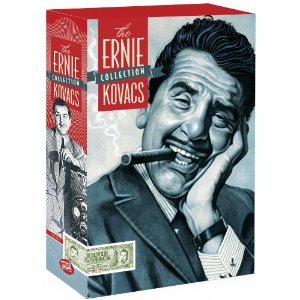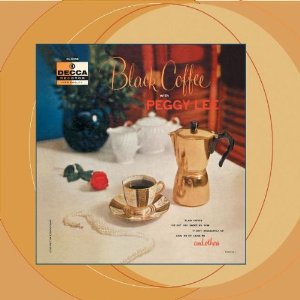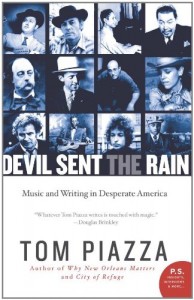 On a recent vacation I took a batch of videos of old TV shows with me for evening entertainment. One of them, which I had been eager to start watching, was a set called “The Ernie Kovacs Collection” (Shout! Factory SF 12359)
On a recent vacation I took a batch of videos of old TV shows with me for evening entertainment. One of them, which I had been eager to start watching, was a set called “The Ernie Kovacs Collection” (Shout! Factory SF 12359). I loved Kovacs when I was a teenager and he was still broadcasting, and since his death I have always looked for opportunities to see some of his work. I still have tapes of a Kovacs series broadcast on Comedy Central Sundays at midnight, and I also have an earlier Kovacs DVD issue. But this is the most extensive Kovacs collection ever issued, and I’m sure I’ll be enjoying it for months. He was a comedy genius and a visionary in the use of television as a medium, and although his work is dated technically its imagination remains fresh.
Kovacs was a great classical music enthusiast and often used classical pieces in his programs. But I’d never seen a one-hour special called “Kovacs on Music” until this publication. It was originally broadcast in 1959, done with a full orchestra, conducted by Andre Previn! Most of the items use music as settings or background for comedy, but there is one completely serious performance: the opening aria from Villa-Lobos’s “Bachianas Brasileiras No. 5,” sung by Kovacs’ wife Edie Adams. Adams was a successful pop singer, and she continued to have something of a career after her husband’s death. (She made enough money to pay off in full a $500,000 tax debt he had left.) But I had no idea she had the classical chops to perform this difficult music. And after hearing Joan Baez’s miserable attempt to sing the piece, as soon as I heard the announcement of what was coming I expected the worst. I was totally surprised. Adams’s is one of the most beautiful performances of the music I have ever heard, even to the very difficult pianissimo humming at the end. She was actually a Juilliard graduate in voice, and fell into pop singing almost by accident. If I were more familiar with Los Angeles cellists of that period, I’d probably recognize some of the cellists, too.
Another item I brought with me is one of Mill Creek’s super-bargain video sets, Essential Family Television, a 12-disc set with 150 programs on it (no catalog number that I can find). Of course most of them are junk that nobody in his right mind would want to see today. And some of the promising items (like a Phil Silvers special co-starring Jack Benny) turn out to be disappointing. But the Jack Benny programs are still quite entertaining, and although the two Buster Keaton Show episodes aren’t very good it’s always a great treat for me to see Buster in action; he’s one of my heroes.
One evening I decided to try a Milton Berle show. I hadn’t seen Uncle Miltie in years but I remembered him as being pretty funny at his best, and there had to be some reason why for several years he had the most popular show on television. Sure enough, the first (of five) episodes began with some frantic but pretty funny comedy. It was a weekly program, and nobody could have come up with and performed live that much wild comedy every week, so the program was always filled out with guests, some comedians, some musicians. About 2/3 of the way into the show, Berle introduced an amazing 15-year-old violinist, and I shouted in astonishment when he announced the young man’s name: Michael Rabin. I’d never seen Rabin on video before. He played Kreisler’s “Tambourin Chinoise” (the title never announced) like the young master he was. That two minutes justified for me the cost of the entire set. Incidentally, a few minutes later Vivienne della Chiesa showed up for another wonderful performance.
Classical music on commercial TV was not so rare in the past as it is now. Johnny Carson would often have celebrity classical performers as guests, and they would show up on other programs with loose enough formats. In December of 1964 I saw my friend Jacob Lateiner playing a Beethoven Piano Sonata on a Sunday morning arts program over Channel 4 New York (WNBC-TV). The most recent such use of classical performers I’ve seen was the Colorado Quartet playing Piazzolla on “Penn & Teller’s Sin City Spectacular” over FX, and that was a good decade ago.

Peggy Lee: Black Coffee. Verve B0003093-02
Found this one at a genuine garage sale, one of eight CDs I bought for a dollar each. Most of them were for sale but this one I wanted to listen to. I also liked the packaging, which reproduces the original Decca LP jacket on the front and—as I could tell, since the disc wasn’t sealed — the original 10” issue jacket also, along with the program notes from both editions (they are almost identical) both in microtype and in readable size. I remember Peggy Lee from when I was very young. I had a 78 of her “Manana” (a novelty song, insulting to Mexicans, which she both wrote and sang) and I listened to her often through the years since. I liked an expression from the new jacket blurb, “a glamorous beacon whose sultry voice gave her performances a shimmering eroticism.” Yes. That same paragraph claims that the original 1953 10” edition of “Black Coffee” was the first jazz project by any “mainstream” singer. Maybe.
The reissue notes by Will Friedland, “jazz reviewer for The New York Sun” (not exactly a prestige gig), go a lot further. “Peggy Lee’s album ‘Black Coffee’ not only may be the greatest album of her career, it is also one of the top ten jazz vocal albums of all time.” Sorry, Will, that’s going miles too far. It’s a good album, yes, and it might be Lee’s own favorite and even her best album. But I can easily name ten better jazz vocal albums by Ella Fitzgerald, Louis Armstrong, or Billie Holliday, among others. In fact, any Billie Holliday album is better jazz than this one, with the sole exception of her very last, “Lady in Satin,” with its hideous arrangements. And what makes this a “concept album”? That all the songs have something to do with love? That they’re all accompanied by jazz ensembles? (There are two different ones, one for the original 1953 10” album, a completely different one for the supplementary 1956 tracks.) I don’t buy the idea. And if you want to hear a supposed mainstream pop singer singing jazz, try the live album of Frank Sinatra’s Australian tour with a group led by Red Norvo. That’s jazz!
Too much negativity here. I enjoyed hearing “Black Coffee” quite a bit. Lee sings beautifully throughout, if not very jazzily. The two different ensembles play quite well, although there aren’t any adventurous solos. (No room, with the longest track running 3:23. Each track had to fit on one side of a 10” 78 or a 45.) The format of the reissue is entertaining, especially to those of us who remember what a Decca LP label looked like.
But back to negativity for the close. This CD contains 35 minutes of music. That’s a travesty. The program notes mention that the 1956 supplementary session for the 12” version of the album resulted in six tracks, four of which were included on the LP. Where are the other two? I’m all for reissuing LPs on CD in a way which maintains the integrity of the original recording concept, so I’m glad this is not a “Best of Peggy Lee” CD with material from half a dozen different albums. But with 45 minutes of blank space to play with, Verve’s producers could have included the other two 1956 tracks and virtually any other complete Peggy Lee Decca album on the same CD. And they should have.

When I write to recommend a new book by Tom Piazza (“Devil Sent the Rain: Music and Writing in Desperate America”), I have to say immediately that Tom is a friend of mine, although we have met in person only half a dozen times. Starting with a phone call he made to me a decade ago from Cape Cod, seeking recommendations for Sviatoslav Richter recordings, we have maintained a lively and wide-ranging contact through e-mails and phone conversations. In recent years our contact has diminished, mostly because Tom’s increasing success as a writer has left him with what one writer described as “a choice between writing novels and writing e-mails.” Still he is a best buddy and I have to admit that I hope you will be interested in his book because I want it to be a success.
Reading through the essays in “Devil Sent the Rain: Music and Writing in Desperate America”, you will get a pretty good idea of the range of Tom’s interest, although it’s definitely not a complete survey. (Among other omissions, there’s nothing here about Gustav Mahler’s music or Sviatoslav Richter’s piano playing.) Although he studied writing at Williams College, he was also a serious pianist and for a time supported himself playing jazz piano. His “The Guide to Classic Recorded Jazz”
although now outdated as a guide to current issues, is the best critical guide to jazz recordings I’ve ever read. (My late friend Marty Laforse, a historian whose jazz background went back as far as hearing Fats Waller play, borrowed a copy of the Guide from me and refused to return it; I had to buy another copy.) He has written a book of short stories and two novels in addition to various nonfiction, and there is another novel currently in the works.
Tom moved to New Orleans fifteen years ago, after being attracted for years by the city’s music and general culture. He was en route home when the disaster we conveniently call Hurricane Katrina (although it was not the hurricane itself which caused most of the disaster) struck the city. Holed up in temporary quarters at his girlfriend’s parents’ home in Missouri, in response to a request from his publisher, he wrote the remarkable short book “Why New Orleans Matters” in five weeks. (Get the paperback edition, which has supplementary chapters.) This essay fulfills its title, and it’s indispensable for people seeking to understand the uniqueness of the city’s nature and its necessary place in America. He followed this up with the equally remarkable novel “City of Refuge,”
a portrait of New Orleans after Katrina as seen through two very different families’ experiences. I still don’t understand why this book failed to become a best-seller and a blockbuster movie.
“Devil Sent the Rain” is a collection of separate essays written for a wide variety of purposes and not originally intended to be published together. Issuing a book like this seem to indicate that Tom’s publisher believes he has a fan base large enough to justify a miscellaneous collection, which is gratifying to know. He has tied the material together with little introductions, much in the manner of Norman Mailer’s “Advertisements for Myself”. Since Tom was a close friend of Mailer’s for years, and includes two pieces about Mailer, it’s an obvious influence.
The subtitle of the book is accurate. The first section is devoted to essays on a wide variety of musicians, including Jimmy Martin (a lengthy piece once issued as a separate book), Jelly Roll Morton, Bob Dylan (a longtime interest of Piazza’s), Jimmie Rodgers, Carl Perkins (how I envy him that meeting!), Charley Patton, and others, including the Grammy-winning program notes to the Martin Scorsese “Blues” collection. Even when reading about musicians I was already well familiar with, like Perkins and Morton, I found new insights and illuminations in these essays. Others sent me back to my CD collection to rehear (and supplement) my understanding of the subjects. In fact, reading this book has already cost me a couple of hundred dollars in CD purchases, so beware.
The second section is about the writing and the desperation. I’m not sure how Charlie Chan wound up here (and, frankly, after watching a couple of the movies, I am still unconvinced by Tom’s arguments in favor of them). The writing material includes Mailer, general comments on literature, Flaubert, and a wonderful “self-interview” which shows Tom’s wicked sense of humor better than any other published writing of his I’ve seen. The desperation relates mostly to New Orleans, and includes some articles and on-line exchanges from shortly after Katrina which add further understanding of the situation beyond what’s in “Why New Orleans Matters”
The last essay is one which may appeal mostly to collectors, particularly record collectors like myself. It’s about a surprisingly successful expedition which led to acquiring some very rare 78s. I suspect there’s some illuminating material about the nature of collecting in here also, but frankly, I can’t be sure, being afflicted with that syndrome myself.
“Devil Sent the Rain” isn’t the most essential Piazza for newcomers to his writing. For the best introduction, go to “Why New Orleans Matters”
and “City of Refuge.”
But it’s a very entertaining collection, showing vividly the expressive and concentrated nature of his writing even while remaining spontaneous. I guess those qualities are just in his nature by now. They’re everywhere in “Why New Orleans Matters” despite the haste in which it was written.